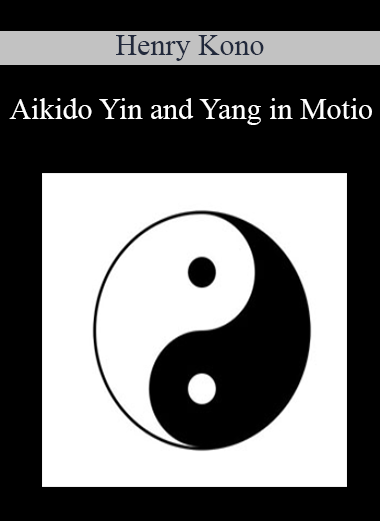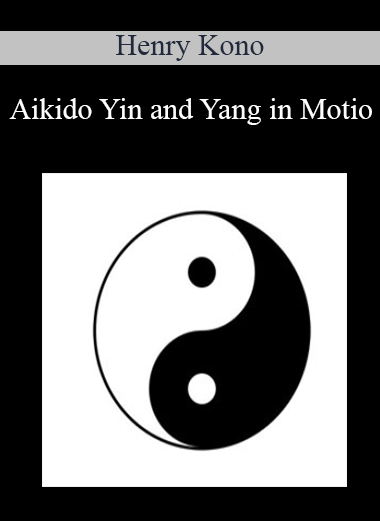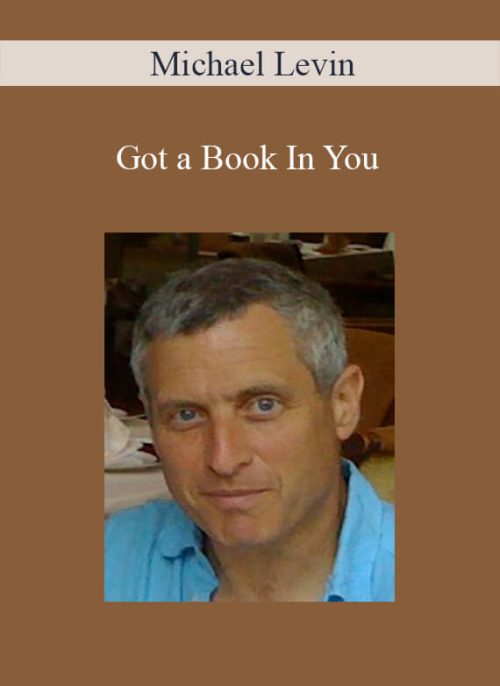Aikido Yin and Yang in Motio – Henry Kono
Aikido Yin and Yang in Motio – Henry Kono
Digital Download: You will receive a download link via your order email
Should you have any question, do not hesitate to contact us: support@nextskillup.com
$26.00


Secure Payments
Pay with the worlds payment methods.

Discount Available
Covers payment and purchase gifts.

100% Money-Back Guarantee

Need Help?
(484) 414-5835
Share Our Wines With Your Friends & Family
Description
Aikido Yin and Yang in Motio – Henry Kono
In an interview he gave in England a few years ago, he said that he never received an explanation from the master about what he was doing during his 10 years with him. Shioda had to watch his master demonstrate, but he had to interpret everything by himself. O Sensei used to say Of course I am not going to tell you what I am doing; it is up to you to understand it while I was at Hombu. The difference between what the different students of O Sensei are showing is the result of Ueshiba’s approach to teaching. I realized that if I wanted to understand what Ueshiba Sensei was doing, I had to focus on the content rather than the form. I was trying to guess what the old man was thinking while he was practicing his martial arts. During my stay in Hombu, it appeared to me that O Sensei had based all of this on a simple principle. I wait for him to uncover something and let go of a clue hidden within his mystical speeches. It was pointless trying to get him to explain what he was doing because I just paid attention. I brought myself to try a more subtle approach, for example, when we were having a party for his birthday, I quietly asked O Sensei, How come we can’t do what you are doing? 40 years later, I still don’t know what the Yin and Yang was. After a month of reflection and meditation, everything came clear to me. I discovered a model where the techniques I had learned in Hombu integrated themselves. Do you know how to follow the principles of Yin and Yang? This is what I will explain to you in this article. No one, not even my own students, will be forced to do it like this, nor will I say that it is the only way to do it. I propose another way to perform the techniques that you all know, a way that is more in line with how the founder was doing them. I am well past the style quarrels and I just want to pass on what I know to whoever wants to learn.
The sum of Yin and Yang is always found in a pair. The couples up/down, front/behind are examples of the harmony that lies within duality. Finding the balance in reference to the center is the only way to reach harmony.
There are two possible approaches that can be taken relative to the center, according to my study of the Yin and Yang in Aikido. We need to agree on what the center is before I can define them. My center is just a few centimeters above my belly button when I am on my own. The concept of Hara is well known by all of the Aikidoka and Budoka. We should be able to agree on that point. When a partner comes into play, everything becomes more complicated. The fundamental differences between the two approaches can be found here.
Working on, unbalancing or taking someone else’s center while using our own center is one of the approaches. I take his center, and he and I are very distinct entities, even at the moment of our interaction. Man, as a self-conscious animal, naturally performs all of his tasks from that perspective.
The will to preserve harmony is the other approach. It’s all about getting one with the opponent. We share the same center if it is true. This center is ours and it will stay that way as long as we interact. There are many examples in nature. In physics, the center of gravity is defined by the point of application of the result of all the forces on the solid. It is equilibrium, harmony, and the sum of all forces is nil. An example can be found in geometry. The center of gravity of a triangle is obvious. If you join two triangles together by one of them, their respective centers of gravity disappear to the profit of the single center of gravity of the quadrangle. The famous 1 1=1 is the only center we end up with.
I wondered where O Sensei was focusing his attention while I was observing him. I was convinced that his attention was focused on the center. The confusion is due to the fact that he did not focus on either his or the other person’s center but on their common center. He kept on saying that there was a 10 between him and I, but nobody got it. He used to say that when Ueshiba came to attack, he didn’t exist. While storming into the Dojo, he used to say that we did not do what he was showing. Ueshiba and his attacker do not exist anymore as separate entities but as a single product of there interaction, which is unity within motion. In the absence of Yin, there is no Yin.
The concept illustrated in Figure 1 is the one we must get away from but what makes it so difficult to actually do it? Nature provided us with a consciousness that allowed us to distinguish between what is us and what is not us. We feel secure in our center, comfortable in our own space, and we perform our actions from that point of view. We are trapped in the model 1 because of our conscience, ego and life experience. We can break free from our reflexes, whether they are natural or conditioned by our education, because all the Dojo work is based on repetition. It is easy to understand but it is hard to preserve this common center. The presence of the other person leads us to forget that this center is common. We have to force ourselves to see ourselves and the opponent as two sides of the same coin.
There is more than one difficulty that arises when we try to practice this. Touch always makes out the difference between what is me and what is him. One needs to go beyond sensory perception to understand the concept of Yin and Yang. This relates to the simplicity of a martial response. motility, coordination and capacity of analysis are all reduced during an aggression. The kick is called theadrenalin kick. Many martial arts masters say that techniques that are applicable in the street or in a survival situation have to be based on very simple principles. The triunic brain does not require complex nervous influx, a minimum of memory resources or limited physical coordination. We must completely adhere to the matrix 2 to resist the temptation of our spirit, which is guided by fear from the unknown or what is the other, to switch back to matrix 1, the natural one that was hard wired into our brains subsequently to millenniums of Darwinian evolution. Feelings and emotional state are prominent in this matrix 1. Aikido is not an art of feeling but an art of knowing. Robert told me that O Sensei confessed to him that if he could understand the secret of Aikido, he would be able to do the same things he did in just three months. I am convinced that we are trying too hard, working too seriously and that this is the reason for our failure to grasp the concept. We become prisoners of knowing how to do things. It’s important to take a step back and look at things from a different angle, rather than repeating the same things over and over again.
If we want to understand what the Yin and Yang symbol means, we need to understand how the two energies work together. Both of them are in states of compression and expansion. In order to equilibrate each other, they are in motion. If we want to use this principle in Aikido, we need to understand that the green line comes from outside and goes towards the center. The green line energy starts from the center and goes towards space. The main point is that Yin and Yang are not in contact with each other, but are linked through the center. When we observe the Yin and Yang symbol, we have to fight against seeing them touching each other, but we should assume that they are both linked through the center. In order to equilibrate each other, they act like one from the center.
I think it’s important to not have stances or fixed postures in Aikido in order to be able to balance at all times. posture is immobile and limits the natural flow as well as the capacity to adapt oneself to what uke is proposing.
If one of the energies is directed towards the center, the other will move away from it. The aim is to see this as evidence so that we don’t forget. When the other side seems to touch us or we are touching the other side, we must consider that we are only touching the center. It is about knowing, not feeling, and not giving in to the sensation that the other is touching us.
The psychological consequence of our senses telling us that our partner touches us is to make us perform body motions that are different from ukes. Our conscious spirit dictates to us where the motion will be performed. We don’t notice that we are moving away from the concept illustrated in Figure 2. Our mind creates clues that lead us to believe that there is no other solution than this one to reach an adapted solution to the situation in front of us.
Henry Kono remembers O Sensei.
The image of a train heading towards us makes it easier to make the attack less personal. We can free ourselves from the psychological tension provoked by an attack. What do he want? What have I done? We are standing in the way of the train. It also frees us from the desire to act arrogantly on uke, since you wouldn’t try to take the center of a train would you?
I will tell you the secret of Aikido. We are not trying to find answers to our problems because there is no problem since the beginning. The goal is not to get away from the flow. We are supposed to just move with what is happening in front of us, learn not to impede the flow until it stops, and most importantly to preserve the balance between the attacker and us. uke is the instigator, and tori is the receiver. Yin doesn’t say I’m going to disrupt or destroy Yang Tori is not trying to do anything because the technique is solely due to uke. The words of O Sensei get a clear meaning after being clarified. He used to say that Aikido was about changing oneself. If I move to maintain the balance that exists between me and my partner, I am no longer applying a technique on him; I am only applying a motion to myself, and this, relative to the center. When I move, it affects my partner through our connection to the center. Without this realization, what we practice is an art which aims at stopping the flow using a bunch of techniques that seem to provide answers to the problem that the other side brings us. If we practice in this mode, the flow is stopped by the implementation of one of the 200 techniques we have in our arsenal. We tell ourselves, He comes with this flow, but I will show him that that one is better. We both produce a flow if we do that.
The final result doesn’t tell the whole story of the difference between performing techniques according to modes 1 or 2. Both ways work. It is easier to practice in mode 2 if you are 80 years old or smaller. I don’t think someone with less strength could do the techniques on someone with more strength. It is certain that a uke with a supple and healthy body can preserve his safety, but on the other hand, if he lacks such physical attributes, he could sustain significant and unnecessary damage. Do we want to survive or do we want to destroy the enemy? Both approaches are effective, but only one leads to harmony, that is to say, the preservation of oneself and the attacker. After forty years of study, I have come to the conclusion that if we want to move with the flow, we need to do so in Figure 2. The only condition that can discern the flow which occurs in front of us and mingle with it is only this. We need to define and accept a center that is not in us in order to put ourselves in that mind-set. We have to imagine that when someone touches us, we are actually touching the center, if we want an image to help us to accept it. We should be able to see where the center is moving and adjust our position to become one with the other side.
I think I said everything. I don’t want to change your practice, but I would like you to keep what I told you in a corner of your head, and maybe one day you will realize what these principles allow you to do.
Even if we were never explained how he moved, his silent message was clear. We were told to open our hearts so we could see how energy moves. We can mimic nature’s movement by becoming aware of this.
Delivery Method
f I had started learning Aikido in my own country and had kept on practicing like that for 40 years, none of what I am about to say would have come about. It is only because I could observe O Sensei from 1964 to 1968 that I realized these things. Of course, due to his old age, O Sensei did not teach on a regular basis. He spent most of his time in his little office at the Aikikai Hombu Dojo and would come every now and then for ten to fifteen minutes to show a few movements for before returning in his room. Overall, I probably saw him practice between 250 and 300 times and it is precisely during these moments that I was getting this sensation that we were not doing what he was doing. We were trying our best to reproduce what we saw him doing but with very little success. Besides, it is one thing that we could not reproduce what he showed but he, himself, constantly refused to explain us what we were not getting. If you did not get it, he would simply do the technique again and say “look carefully!” but never would he give any explanation. As surprising as it sounds, this was actually very typical of O Sensei’s way of teaching and to a larger extend, it was common to all the great Japanese masters of Budo. These men always took their secrets with them to the grave and O Sensei was no different.
– After your purchase, you’ll see a View your orders link which goes to the Downloads page. Here, you can download all the files associated with your order.
– Downloads are available once your payment is confirmed, we’ll also send you a download notification email separate from any transaction notification emails you receive from nextskillup.com.
– Since it is a digital copy, our suggestion is to download and save it to your hard drive. In case the link is broken for any reason, please contact us and we will resend the new download link.
– If you cannot find the download link, please don’t worry about that. We will update and notify you as soon as possible at 8:00 AM – 8:00 PM (UTC 8).
Thank You For Shopping With Us!
OUR BEST COLLECTION OF COURSES AND BOOKS






Reviews
There are no reviews yet.